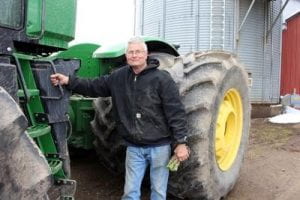March 16 is the deadline to sign up for Risk Management Agency (RMA) insurance products covering 2020 spring planted crops. Make your appointment now with your crop insurance sales agent.
One of the key decisions a farmer will face when signing up for crop insurance is what “Units” they want to use. The basic description of the three Unit choices are below. Your Insurance agent will have the complete descriptions.
- Basic Unit – All insurable acreage of the insured crop in the county on the date coverage begins for the crop year. The CAT endorsement generally limits units to basic units.
- Optional Unit – A Basic Unit may be divided into Optional Units if fields are located in a separate FSA Farm Serial Number (FSN), by written agreement as sectional equivalents, and practice.
- Enterprise Unit – Must contain all of the insurable acreage of the same crop in two or more FSA Farm Serial Numbers, sectional equivalents, or by other criteria.
Farms whose fields are all in one FSA Farm Serial Number (FSN) only have the option to use “Basic Units”. Farms that have fields located within different FSN’s can use either the Optional Units or the Enterprise Units. Insurance coverage with Optional Units is more expensive but offers more protection from risk from isolated issues affecting the FSN.
One dairy farmer found that fields further from his farm didn’t receive as much manure as those closest. In drought years those further fields experienced more of a yield hit than those that were closest. He found using Optional Units, although more expensive, allowed him to cover the risk of a drought differently on his total acres. Play the video below to hear crop farmer Brian Andrews of Machias, New York explain how he uses Optional Units for crop insurance coverage on his farm.
Farmers choose Enterprise Units most often because the cost to insure the crop is up to a third lower. This is because all acreage for a crop is averaged together so a significant loss in one FSN may be spread across all the FSN’s for that farm.
A farmer interviewed in Western NY stated that he mainly used the prevented planting option since the risk he had was that he planted multiple crops in the spring and prolonged wet periods that delayed the planting of one crop would affect the planting of the rest of his crops. With prevented planting he would take the insurance guarantee for that crop and move on with the planting of the rest of his crops. Prevented planting, if allowed by the policy, is an option with any of the unit choices, so he felt he got the coverage he most needed at the lower cost Enterprise Units.

